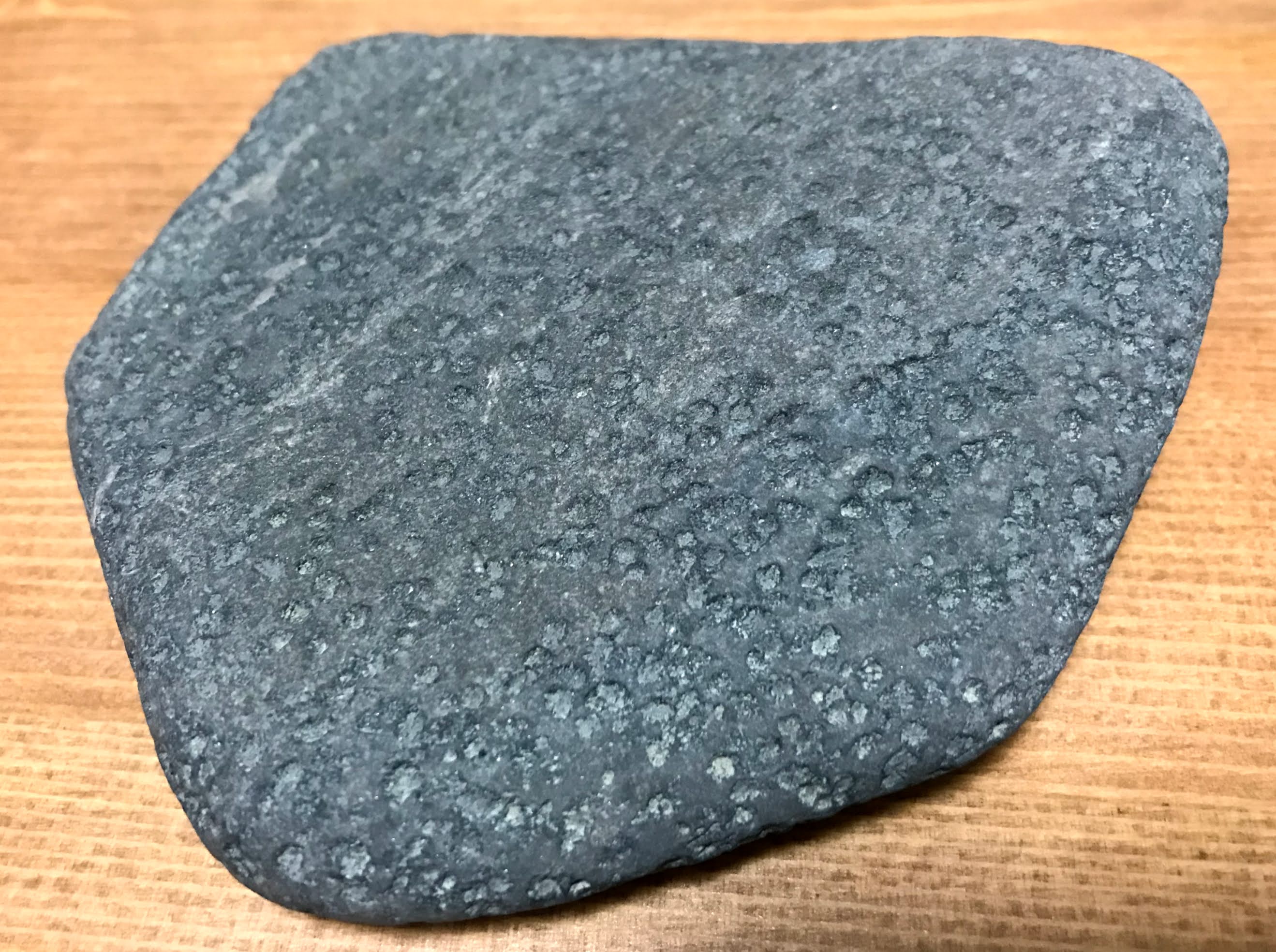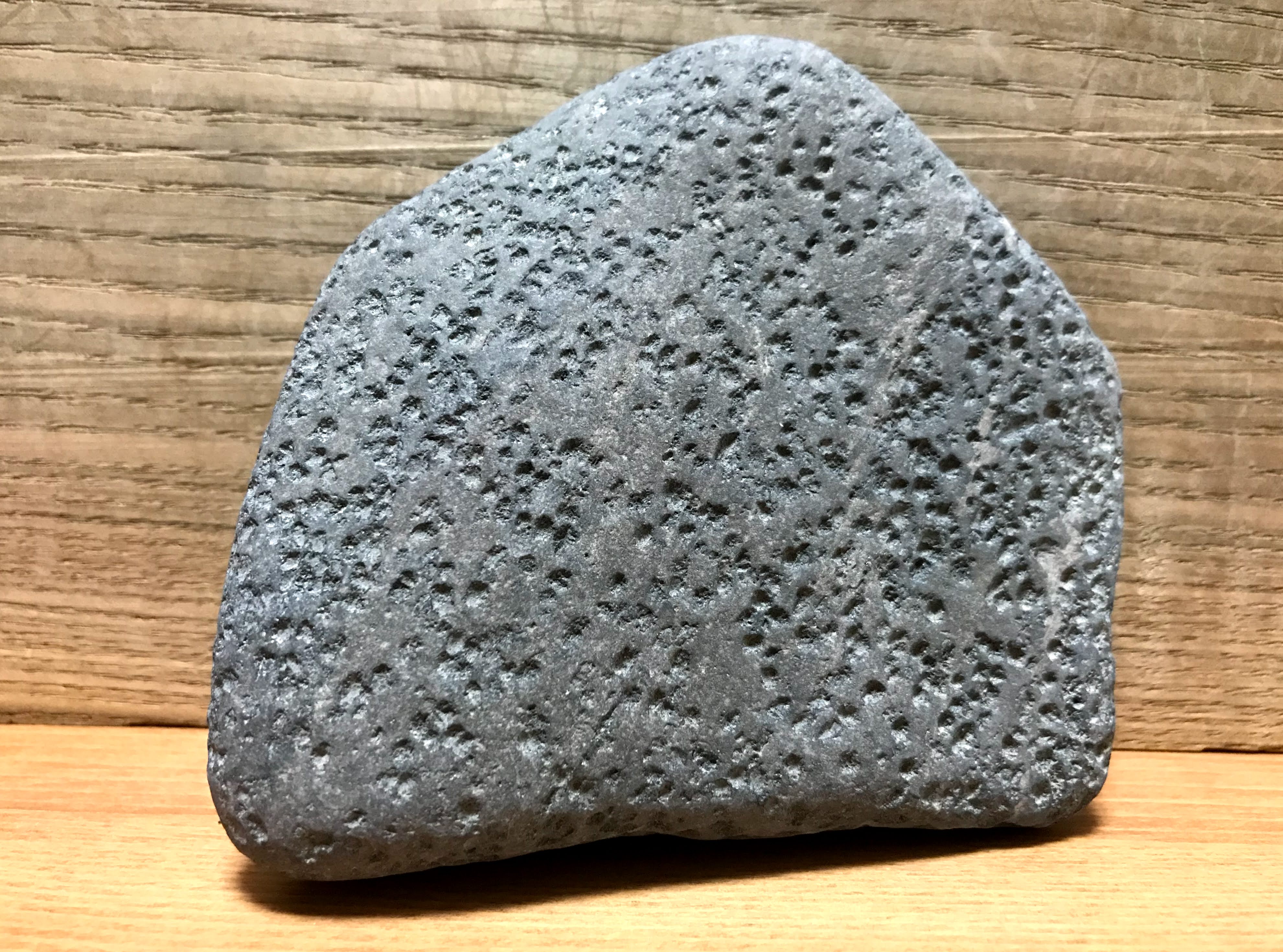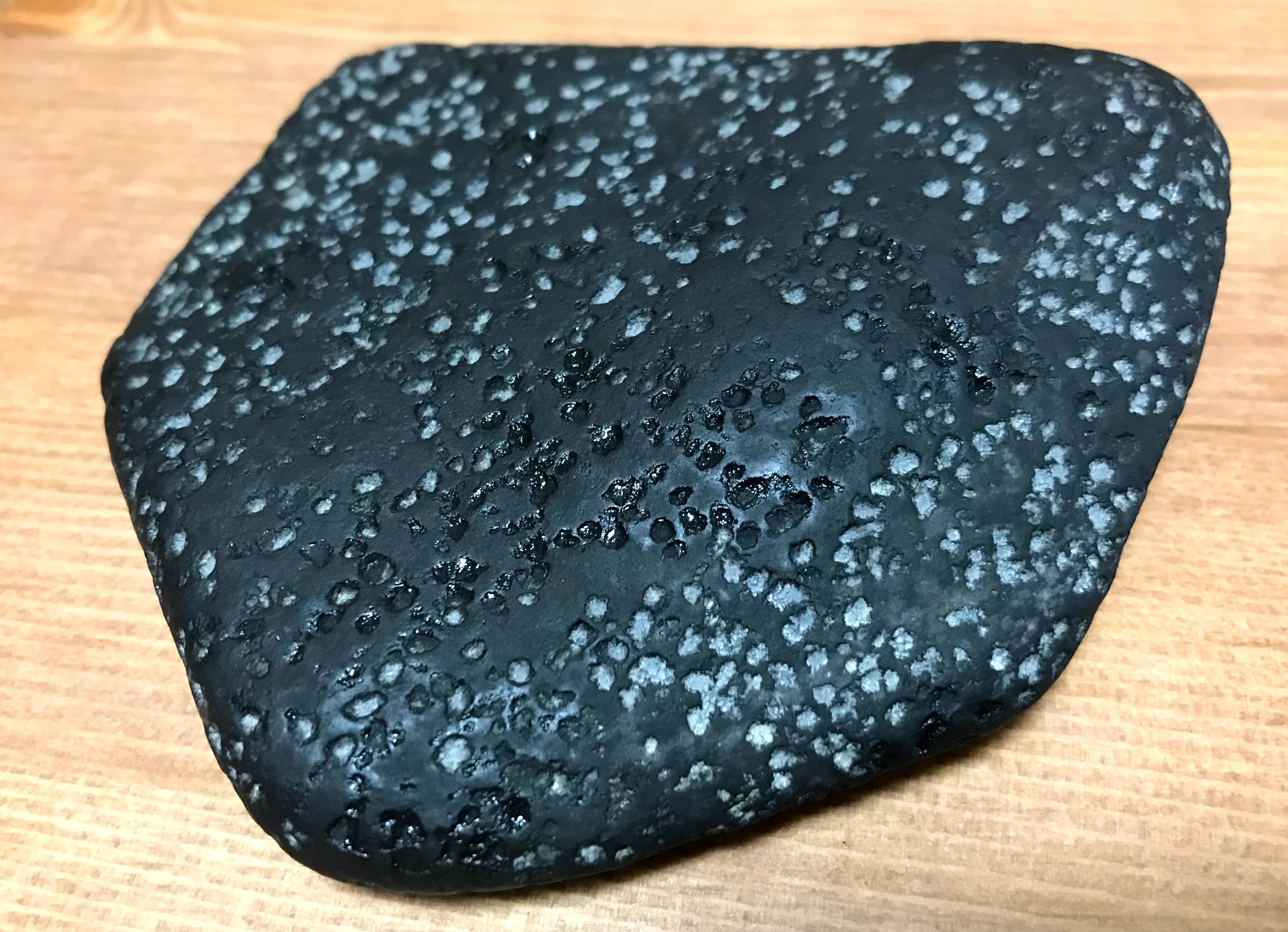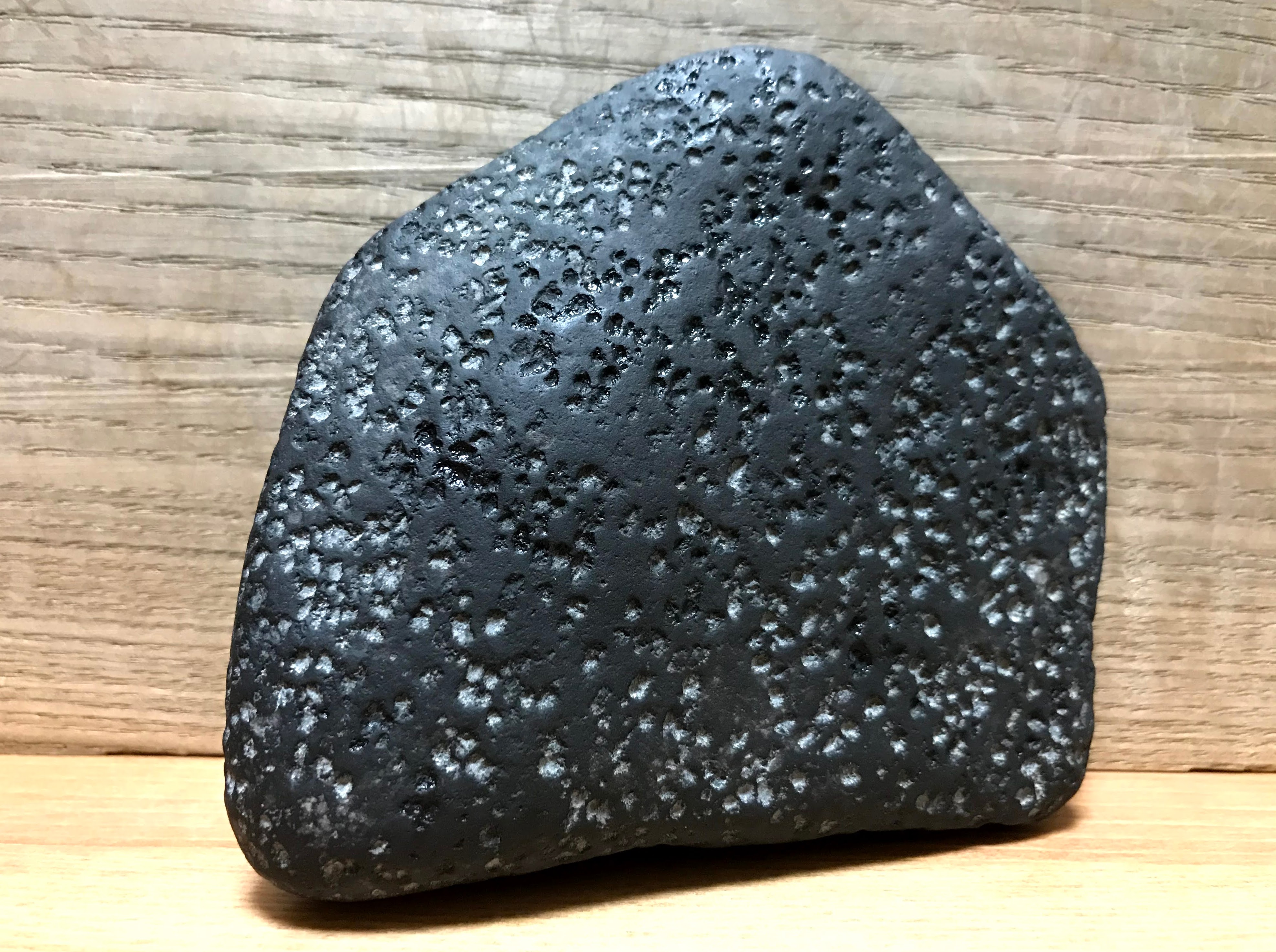About Maguro-ishi, Aoguro-ishi, Haiguro-ishi
True black, blue black, and ash black
In Suiseki, there are three words to express stones with blackish colors.
True black, blue black and ash black.
True black is "真黒" , bleu black is "蒼黒" and ash black is "灰黒" in Japanese.
By the way "真黒" is pronounced as "Maguro" which means tuna. Tuna is very popular in Japan and it is word games.
In Suiseki, true black is considered as the best. However, true back stones are very few.
Actually, if you are not concerned about quality of stone, of course, black stones can be found anywhere, however, stones for Suiseki should be fine and hard.
Further, shape is also important. So, true black stones with quality and shape are very few.
On the other hand, from the perspective of treating stone, 養石, which is one of technics of Suiseki, there is the pressure of treating in blue black and ash black since true black is always black with treating or not.
Please see the following photo:
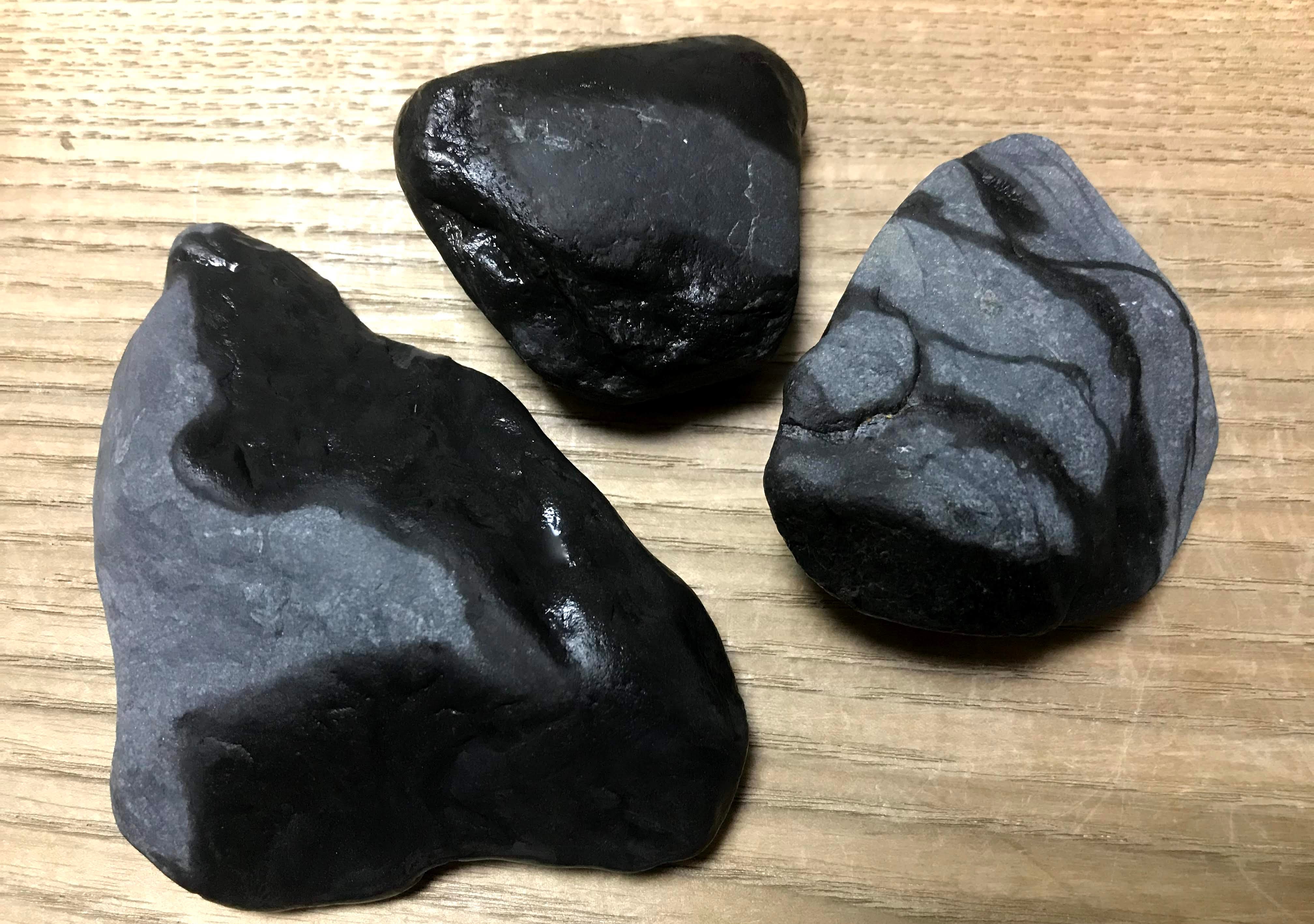
This picture shows half dry condition on ash bleck stone. As you see, wet portion is almost black and dry portion is gray. So, you can change the color from gray to almost black(true black) by treating stone.
The following stone has just been picked up from river. The surface is damaged and its color is whitish. This color is considered as ash black.
Here, to see the color change by treating stone simply, applying Vaseline on the surface. Although actual treating stone takes time and effort to make it more historical, here is just trial.
By the Vaseline, the color is changed to black dramatically. So, treating stone also has the same result and ash black turns to true black.
Although true black is considered as the best, I believe that the true black includes black stones which were blue black or ash black originally but changed its color by treating stone.


